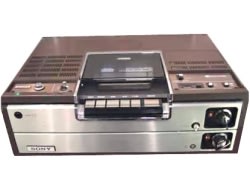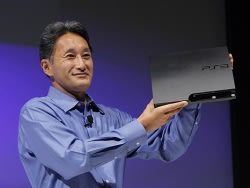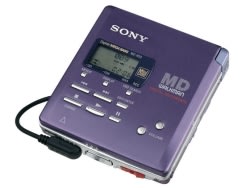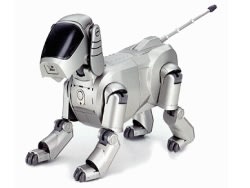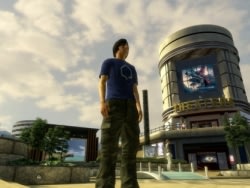CHICAGO – Rashad Evans wasn’t nearly the collegiate wrestler that Phil Davis was and didn’t come remotely close to becoming a four-time All-American and winning a national title, as Davis did while at Penn State.
But in the main event of UFC on Fox 2, Evans proved Saturday that mixed martial arts is another thing entirely.
Evans won by unanimous decision over Davis – judges had it 50-45 across the board – proving to be the faster, sharper and more complete fighter. The victory in front of a sold-out United Center earns Evans a title shot against light heavyweight champion Jon Jones on April 21 in Atlanta.
“Phil Davis definitely brought it, and I won. And now that I won, I get an opportunity to fight Jon and I’m excited about it,” Evans said.
Evans had Davis in a crucifix several times in the fight and rained damage upon Davis. Davis simply didn’t have the hands to make Evans respect him and didn’t have Evans’ overall game.
By the middle of the third round, the only question was whether there would be any fireworks in the cage between Evans and Jones, one-time friends and training partners who had a bitter falling out and have become enemies.
Davis had no answers and Evans simply picked him apart en route to earning another crack at the UFC belt.
A victory for Chael Sonnen also set up a much-anticipated fight. Sonnen will get another shot at middleweight champion Anderson Silva after grinding out a hard-fought decision over Michael Bisping in the co-main event. Two judges had it 29-28 for Sonnen and the other had it 30-27. Yahoo! Sports scored it 30-27 for Sonnen.
With the win, Sonnen will get a title rematch, likely in June in Brazil. In 2010, Sonnen dominated a title fight with Silva at UFC 117, but was submitted in the waning moments of the bout.
Bisping made it a very tough bout, neutralizing Sonnen’s wrestling much of the time. However, his inability to put together any sustained stretches of offense ultimately cost him.
In the third, Sonnen took Bisping down and got his back, but was unable to secure a submission. He moved into mount and landed some hard shots from the top that earned him the victory.
Just 10 days ago, Chris Weidman was 217 pounds and about to eat a Sloppy Joe when he received a call from the UFC to fight Demian Maia in a middleweight bout. He accepted, made weight and, despite gassing in the latter part of the fight, did enough to score a unanimous decision.
Weidman managed to out-strike Maia and largely kept the fight off the ground, where Maia’s jiu-jitsu would have been a major factor.
Maia’s right eye was swollen badly by the end of the first round and he never got untracked in dropping an important bout in the division.
Evan Dunham had a poor first-round against Nik Lentz in their lightweight bout, but a pep talk from coach Ray Sefo got him going in the second. Dunham pummeled Lentz in the second, closing his left eye, and won by TKO at the end of the round when Lentz was unable to see and doctors stopped the fight.
“I started slow and [was] not very sharp, but by the end of the first, I felt much better,” Dunham said. “I knew I had his number and I was going to take this fight. I completely dominated the second round and I was ready to finish him in the third. When I heard the decision that the doctors stopped it, I was a little bummed out. As a fighter, you want to prove to yourself that you can finish the fight. I’ll take the [win], but I would have preferred to finish it on my terms.”
Mike Russow, a Chicago police officer, made the local crowd happy by out-grappling hulking Jon-Olav Einemo en route to a unanimous-decision victory in a three-round heavyweight match. Judges had it 29-28 twice and 30-27 for Russow.
Most of the fight was spent with Einemo on his back and Russow in top position. He never came close to finishing the fight, but was in control throughout. His only moment of danger came early in the third, when Einemo drilled him with a hard knee, the best strike of the fight.
Russow survived and went on to earn his second UFC win.
Cub Swanson landed a massive right hand that spun George Roop’s head around and sent him tumbling to the canvas. Swanson followed up with a few shots on the ground and referee John McCarthy stopped it, given the Jackson’s MMA featherweight a TKO victory at 2:22 of the second.
Swanson, who gave up six inches to Roop, had difficulty gauging the distance in the bout’s opening moments. Once he got comfortable, though, he controlled things the rest of the way. He landed harder and more often, both with kicks and punches, and had Roop backpedaling to get out of danger.
“I knew I had to be patient and feel him out,” Swanson said. “He’s a lanky guy who can catch you if you’re not ready. That shot just connected and rocked him and put him on his back. I wanted to make sure that I had finished it because it all happened so fast. I’m going to take about two weeks off and see how I feel. I might be looking to get back in here pretty quickly after a win like this.”
Roop was caught off guard by the finish and had trouble remembering exactly what had happened.
“We had some pretty good action when the match started and I was using my range to gain the advantage,” he said. “I’m really not sure what happened because it really just happened too fast. He hit me with something that I didn’t see coming at all. He followed up on it and did what he had to do.”
Charles Oliveira dropped to featherweight and had few problems with Eric Wisely, forcing a tap at 1:43 of the first with a leg lock. Oliveira, who was 0-2 with a no-contest in his previous three fights, quickly took Wisely down and, when he did, the fight ended almost immediately.
“I have practiced my submissions endlessly and it was easy to look for that opportunity to finish the fight,” Oliveira said.
Michael Johnson survived a bad situation in the third round when Shane Roller got his back and managed to hang on to pull out a 29-28 unanimous decision in a lightweight bout. Johnson used his movement and defensive wrestling in the first two rounds to throttle Roller, an All-American wrestler at Oklahoma State.
Roller took Johnson’s back in the third and was landing hard shots, but several of them were to the back of the head and, thus, illegal. When referee Herb Dean stopped it briefly to warn Roller, he never regained his momentum. Roller tried unsuccessfully to maneuver for a rear-naked choke, but Johnson scrambled to his feet and out-struck Roller over the final 70 seconds to earn the win.
“That fight felt great,” Johnson said. “I controlled almost the entire fight except for the brief period in the third round. I felt like my wrestling defense and my entire game was just so much better all around. I was a little nervous in the third round, but I didn’t panic and I kept in constant communication with Herb Dean that I was OK and that some of the shots were to the back of my head.
“I eventually got myself turned around and got back in a dominant position inside the Octagon. This was a good win for me, but I’ve got some work to do in the gym to get myself to where I ultimately want to be. I’ve got my eyes set on top 10 status and, hopefully, title talk sooner rather than later.”
Heavyweight Lavar Johnson made his UFC debut an impressive one, out-striking Joey Beltran and stopping him at 4:24 of the first round. Johnson finished Beltran with a combination of punches, starting with a crunching right uppercut that landed squarely on the chin.
Johnson, whose reach and punches controlled the round, poured it on after landing the uppercut. As Beltran slumped to all fours, referee Robert Madrigal jumped in to stop it.
“I landed some hard shots and he stayed in there,” Johnson said. “I stayed calm and composed and picked my shots and I knew one would eventually land where I needed it to. I knew I had him when I got him with that uppercut and I just kept putting it on him until he dropped.”
In the opening fight on the show, Chris Camozzi struggled in the opening round of his middleweight bout with Dustin Jacoby. Jacoby was consistently beating him to the punch and landing the harder shots. But Camozzi knocked Jacoby down in the waning seconds of the first and that seemed to change the fight’s momentum.
Camozzi controlled the rest of the match and ended it with a guillotine choke at 1:08 of the third round. Camozzi, who said he dislocated a finger on his left hand in the second round, set the finish up with a kick. As Jacoby staggered back to the cage, Camozzi caught Jacoby with the guillotine and forced the tap.
“I felt like my timing with strikes was on and that was what I needed to keep good distance from him,” Camozzi said. “I dropped him once with a hook and I knew that I could use my striking to dictate the rest of the bout. A little into the third round, I heard my coach tell me to ‘Go for the kick.’ I did and that allowed me to set up the 10-finger guillotine to put him out.”





























